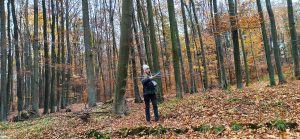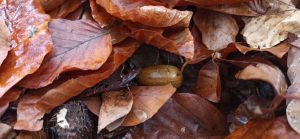NCN Sonatina 4 nr 2020/36/C/NZ8/00013 „The role of secondary dispersal in montane tree recruitment along an elevation gradient: considering the climate change scenario. ”, 2020-2023


Many tree species rely on animals as seed dispersal agents. One of the ways of such seed dispersal is collecting seeds by animals, removing from under the parent tree and burying in stores for later consumption. But seeds removed and buried by one animal species may be stolen and handled by other animals. What happens to the seeds then? The answer to this question has been asked by ecologists for years, because such stealing can have a huge impact on the forest dynamics. Moreover, understanding these interactions is essential because they can be altered by climate change.
An example of such two-step seed dispersal is the interaction among Swiss stone pine, spotted nutcracker and granivorous rodents in montane forests in the Alps and the Carpathians. Nutcrackers are the only animals able to husk the intact seeds from pine cones and bury them in shallow stores. In this way, nutcrackers are responsible for pine seed dispersal. Interestingly, it has been recently shown that these buried seeds are intensively stolen by rodents. It is not known, however, what happens with such stolen seeds and what effect this may have on pine regeneration. On the one hand, the majority of pine seeds can be eaten, which will slow down pine recruitment. On the other hand, granivorous rodents are known to rebury stolen seeds in new sites. Moreover, rodents often bury seeds in sites favorable for germination of pine seeds, unlike nutcrackers that usually hide seeds in unfavorable sites. Therefore, rodents could promote the regeneration of the Swiss stone pine.
Nevertheless, the fate of seeds stolen by rodents may vary with altitude due to decreasing numbers of small mammals. This is because the more rodents, the greater the chance that available seeds will be eaten. Therefore, rodents act as conditional mutualists, i.e. their importance changes with changing environmental conditions as well as proportions of seeds eaten vs. buried. It is important because, as a result of global warming and mitigation of environmental conditions, rodent populations started to colonize higher and higher altitudes. Thus, what we can now observe at lower elevations gives a future picture of the processes taking place at higher elevations. In our project, we are going to determine the role of rodents in Swiss stone pine recruitment, considering the fate of seeds removed at different elevations. This study will be the first testing these interactions in montane ecosystems. Is this role negative due to seed consumption and slowing down the pine recruitment, or on the contrary – intensive burial of seeds by rodents promotes seed germination? Does this role change with elevation, so we can say about conditional mutualism? Do rodents promote an upward shift of alpine treelines? We will conduct comprehensive experiments and surveys to answer these questions. It will also help to assess the potential indirect impact of climate change on pine population dynamics. Understanding the role of granivorous rodents in this system is even more crucial because the global nutcracker population is decreasing and, therefore, the contribution of small mammals in pine recruitment will be increasing.
Information about what happens with such stolen seeds can change our perception of the impact of seed dispersers on forest regeneration. Thanks to this project, we will not only determine the importance of rodents in the Swiss stone pine-nutcracker interaction, but also be able to show whether any similar interactions between plants and animals that disperse and steal their seeds may require verification. This is particularly important, given the changes taking place in such ecological processes caused by global warming. Interactions now considered as strongly mutualistic (e.g., oaks-jays) may change their character, if we take into account that other animals intensively steal seeds, as well as the effects of climate change. Our results will also play an important role in creating simulations of future changes in species distribution which consider various interactions between organisms.
